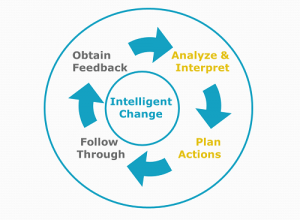When you walk in the room, who shows up for Read more →
Using the Tools of Leadership
Posted Tuesday, February 26, 2013Allen Slade
As a leader, it is not enough to have the job title. At the point of action, you need to choose the right tool for the job.
Leaders can’t operate on cruise control. Instead, they should will fill their leadership toolbox with a variety of tools: Task and person leadership. A variety of communication techniques. A range of decision making approaches. Verbal, quantitative and emotional intelligence. Macro and micro perspective. Fast or slow action. Problem solving and paradox managing.
 But you can mess up, even with a full toolbox. At the point of choice, you need to know which leadership tool to pick up. If you pick up a circular saw to cut hard to reach nails, don’t expect it to go well.
But you can mess up, even with a full toolbox. At the point of choice, you need to know which leadership tool to pick up. If you pick up a circular saw to cut hard to reach nails, don’t expect it to go well.
There is no simple how-to guide for leadership. While Amazon lists 86,941 books on leadership (and probably more by the time you read this post), be careful. The reality you face is more complex and subtle than obeying leadership laws or imitating newsworthy leaders.
Bottom line: You need to develop your own leadership insight through experience and the wisdom of others.
Leadership insight starts with personal experience. As you develop the ability to use a leadership tool, you will start to develop a sense of when that tool is the best choice. Maximize your growth by taking an intelligent change approach to your leadership experience.
 Risk-taking. Leadership insight starts with action – what’s called follow through in our intelligent change model. Excessive perfectionism will keep your shiny new tool in the box.
Risk-taking. Leadership insight starts with action – what’s called follow through in our intelligent change model. Excessive perfectionism will keep your shiny new tool in the box.
Feedback. Experience-based learning happens only with feedback. You need to know how the tool worked to know when to use it.
Reflection. It is not enough to experiment and to collect feedback. You must analyze and interpret your experience. Contemplating the what, how and (especially) the when of your successes and failures will help you figure out when to choose a leadership tool. To be accountable for reflecting on your leadership, try keeping a leadership journal or chat with your circle of trusted advisers on a regular basis.
The wisdom of others. You learn faster with help. Teachers, mentors and coaches are all valuable resources to help you figure out your personal theory of leadership. As leaders mature, they learn less from the expertise of teachers or the experience of mentors. From mid-career on, leadership growth requires finding your own leadership coach or executive coach. Ask your senior leader or HR person if your company can provide a coach for you.
Fill your leadership toolbox and develop your insight so you know what works. Then, you will be ready to grab the right tool for the situation.



Goals are our most powerful motivators. When everyone knows they are working together to achieve something they all agree is worthwhile, it results in strong team feeling and willingness to ‘go the extra mile’.
Use (www.goalscape.com)! Visually displays your business goal structure and all your projects. Shows goals, priorities and progress in a single clear, easily understood image.
Ideal for goal alignment, discussions about relative importance of activities in different areas (according to their contribution to higher level goals), planning projects and periodic reviews.
See also Marcus Baur’s article ‘Why the Visual Overview is Vital’: http://www.goalscape.com/blog/why-visual-overview-vital-success-sport-business-and-life-marcus-baur and double Olympic Gold Medal coach Emmett Lazich’s example from top level sport here: http://www.goalscape.com/blog/.
I agree that goals are an important tool. See my thoughts on SMART goals http://www.sladeresearch.com/2012/08/21/smart-goals/ and leading with goals http://www.sladeresearch.com/2013/02/05/leading-with-goals/.
However, while goal setting and MBO should be tools in your toolbox, sometimes you need to reach for a different tool. Otherwise, goals become your hammer, and everything looks like a nail.